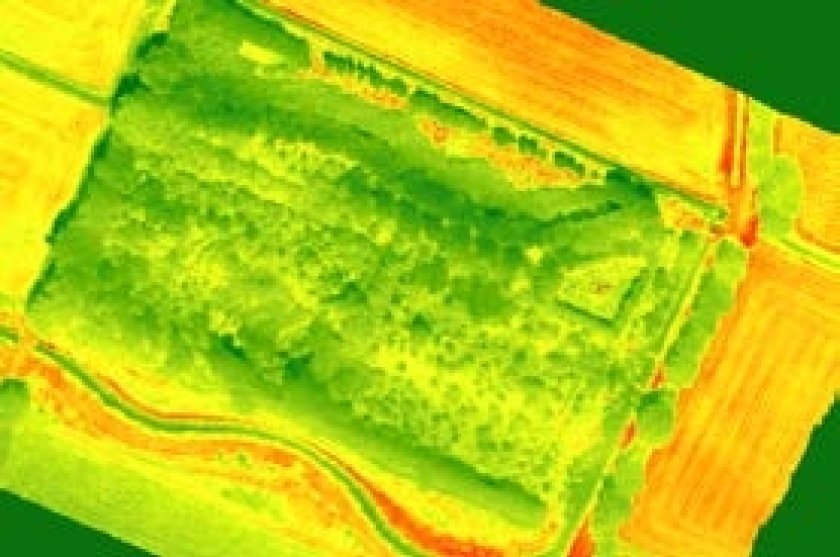
New ways to better measure biodiversity
Scientists, farmers and policy makers are striving for more biodiversity by applying nature-inclusive agriculture and other initiatives. Do new forms of agriculture such as food forests have the desired effect? This research project identifies the best methods for measuring biodiversity.
Promoting biodiversity is high on the agenda. “Many species are not doing well”, explains Arjen de Groot, animal ecologist at Wageningen University & Research. He refers to the entire ecosystem of plants, animals, fungi and bacteria. As an animal ecologist, he predominantly focuses on animals. “Their numbers are decreasing or are even threatened with extinction, while these species are essential.”
This article appeared in TO2MORROW, the magazine of the TO2 Federation. This organization publishes this impact report once a year, featuring the results of research and collaboration among the five TO2 institutes: Deltares, MARIN, NLR, TNO, and WUR.
Pest controllers
Bees are a good example of this. “If fewer flowers are pollinated, this will result in deformed fruit or no fruit at all. This could cause considerable damage to the cultivation sector.” Insects such as spiders, earwigs and hoverflies also have useful functions for humans. “We can use them as pests controllers rather than chemical pesticides, but there must be enough insects. In the Netherlands, we have been trying to work together more often with nature in recent years,” says De Groot.
Every technique has advantages and disadvantages, so it is important to combine the various methods.
Examples include green roofs in urban areas or flower strips to attract more insects. Nature-inclusive agricultural systems are also emerging. The new food forests, for example, in which the Dutch Ministry of Agriculture, Fisheries, Food Security and Nature (LVVN) is investing heavily. “But if we are to stem the tide, we must apply these new initiatives as effectively as possible”, says the researcher. “And that is why we are investigating whether this type of new agriculture actually contributes to increasing biodiversity.”
Drone photography

Measuring biodiversity is not a new phenomenon. Biodiversity has long been measured by birdwatchers listening to birds or watching them using binoculars, or by scientists who capture insects and identify them in the laboratory. De Groot: “This is meticulous, specialised and time-consuming work.” Researchers are therefore experimenting with new monitoring methods. They do so in Ketelbroek, the oldest food forest in the Netherlands.
Drone photography, for example, clearly shows how healthy the plants are by using colours. “We are also investigating whether we can use the same light signals to recognise the species.” By way of sound monitoring via small cabinets hanging in a tree, researchers are able to measure the sounds of birds and bats. Other mammals are photographed when they pass a camera. By way of automatic image capture and sound recognition, a list is generated that shows the observed species. This makes it possible to collect information quickly and efficiently on the presence and identity of various animals or plants in a given area.

Airborne DNA
Another state-of-the-art method is an analysis of DNA floating in the air. “This was first tested at the zoo in Copenhagen a few years ago”, says De Groot. There was a device on the roof of the reception area that sucked up air. Its purpose was to perform a DNA analysis after a week of the hairs and skin cells present. The DNA of almost all the animals in the zoo was found to be present. “In Ketelbroek, we also saw how efficient and remarkably meticulous this is, which is quite an eye-opener.”

For example, this method appeared to identify almost all species that were found by both a bird watcher and through sound monitoring, plus a large number of extras. De Groot expects this technique to take off in a big way in coming years. Research shows that these new measuring methods can measure biodiversity faster, more reliably, cheaper and on a larger scale. “Every technique has advantages and disadvantages, so it is important to combine the various methods. For each species and for each type of research question, we have to look at what works best,” explains De Groot. WUR’s Wageningen Data Competence Center helps to summarise and visualise all that data in graphs so that other scientists, farmers and policy makers can make use of it. The insights gained help them to take the right measures, thus increasing biodiversity.
- Unfortunately, your cookie settings do not allow videos to be displayed. - check your settings
